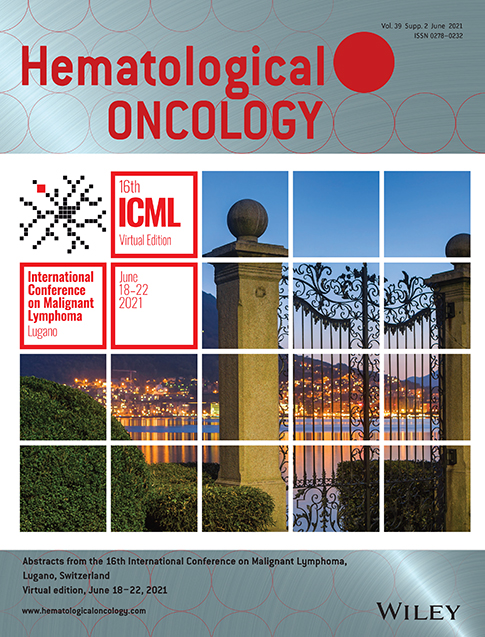INTESTINAL T-CELL LYMPHOMAS: MOLECULAR INTEGRATIVE ANALYSIS RECOGNIZES DIFFERENT THERAPEUTIC TARGETS FOR EACH SUBTYPE
More frequent types of Primary intestinal T-cell lymphomas are Enteropathy-associated T-cell lymphoma (EATL) and monomorphic epitheliotropic intestinal T-cell lymphoma (MEITL). Although they differ in epidemiology, morphology and immunophenotype they both shared an unfavourable outcome with poor response to standard chemotherapeutic regimens. Definition of the genetic landscape of these tumours the data is still in process. Here we have analyzed a series of both EATL and MEITL cases in an attempt to identify tumour-specific therapeutic targets. The series included 7 (EATL) and 9 MEITL formalin-fixed paraffin-embedded (FFPE) cases. Both expression and mutational studies were done by different platforms. GEP analysis disclosed that the CD40-pathway was statistically differentially expressed in the EATL cases, due to the overexpression of BTG2, HTRA1 or RUNX1 genes; moreover, TNFRSF8 was upregulated in this group. While RPS6KA3, HDAC2 and FH were highly upregulated in the MEILT subgroup. Other potential targets differentially expressed in the EATL subgroup were CD274, TGFB1, SMAD3 or KDR while MEITL cases displayed increased expression of a set of cytotoxic markers (GNLY, NKG7 or KLRB1). A total of 24 different genes were found mutated in the whole series of cases. The number of mutations per case as well as the allele frequency of most of the mutations was higher in the MEITL subgroup of tumours. Most EATL patients showed mutations in DNA repair genes, followed by alterations in genes of the NOTCH, VEGF or PI3K/AKT signaling pathways. On the contrary, MEITL cases analysed showed mutations in SETD2 gene, the RAS gene family or the JAK/STAT pathway. Integrative molecular analysis confirms that EATL and MEITL are strongly different disorders, linking both expression signatures and mutational data. This study suggests tumor type-specific therapeutic targets including immunotherapy for EATL and CD30, MAPK, JAK/STAT pathways inhibitors for MEITL.
Keywords: Extranodal non-Hodgkin lymphoma
No conflicts of interests pertinent to the abstract.




